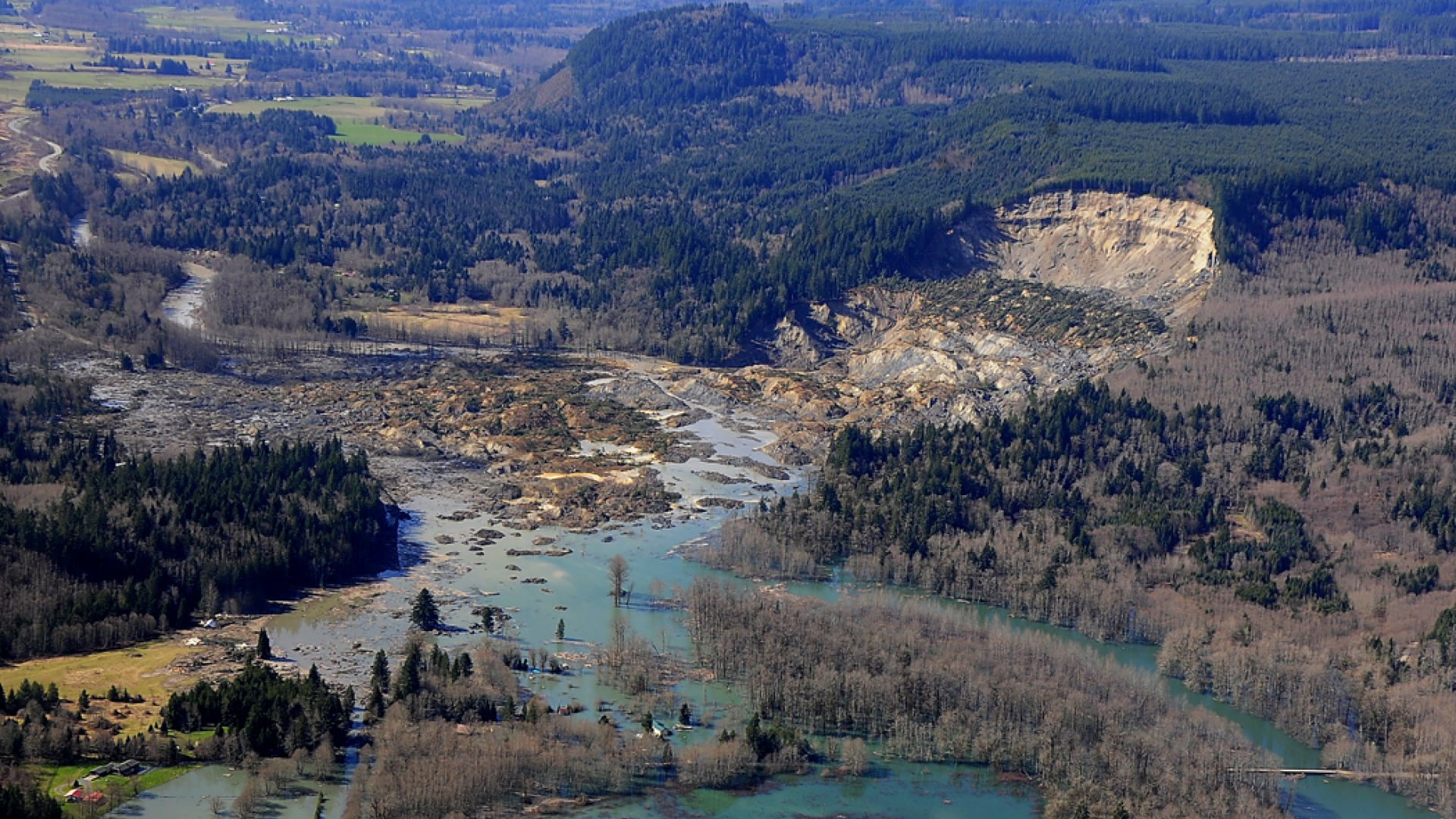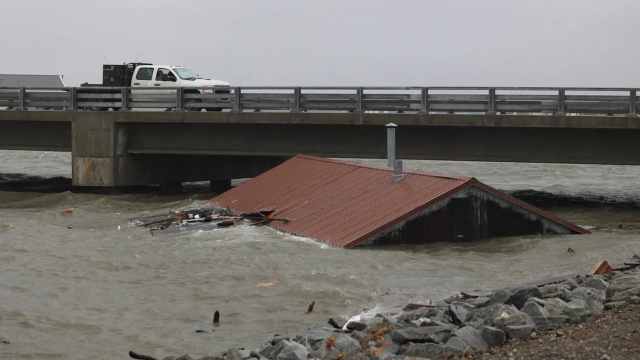
Regional philanthropic organizations have been quick to respond to the immediate needs of communities devastated by the mudslide that occurred along SR 530 in Oso, Washington on March 22. Corporations and corporate giving programs such as Weyerhaeuser, The Bank of America Charitable Foundation, The Boeing Company, Employees Community Fund of Boeing Puget Sound and Alaska Airlines have provided over $350,000 in grants and in-kind contributions to relief efforts. The Greater Everett Community Foundation (with support from The Seattle Foundation) and the Stanwood-Camano Area Foundation have set up funds to support rebuilding of the Oso and Darrington communities.
History has shown that philanthropy plays an important role in supporting disaster relief, multi-purpose health and human service agencies, and volunteer systems – such as the American Red Cross and the United Way– in the immediate aftermath of a natural disaster. In fact, according to the Foundation Center, the majority of disaster philanthropy occurs at the initial time of the incident and is designated for emergency relief funding.
According to Moving to Higher Ground: Potential Roles for Philanthropy in Helping Washington’s Communities Cope with Disasters most philanthropic organizations fund disaster management on an ad-hoc basis, writing that “Disaster philanthropy is often treated as a ‘one-off’ relief effort, so many institutions are not set up to take a longer term view of disasters.”
Disaster preparedness, mitigation and long-term recovery efforts receive far less philanthropic support than immediate disaster response. For example, after Hurricane Katrina, the Foundation Center reported that total institutional giving fell from a high of $472 million in 2005 to $8.5 million in 2008.
We do not want to diminish the importance of flexible, creative funding that serves the short-term needs of individuals, communities, government and nonprofit organizations in the immediate aftermath of a natural disaster. However, we’re hearing an increased call for philanthropy to “slow down” in its response to both the Oso mudslide and other disasters.
In a recent blog post published by the Center for Disaster Philanthropy (CDP), Molly de Aguiar of the Geraldine R. Dodge Foundation of New Jersey writes that – based on lessons learned a year after Hurricane Sandy – philanthropists should remember that disaster recovery “is a marathon, not a sprint” and “understand the needs of the community and the nonprofit organizations providing service” in order to identify the most appropriate opportunities for impact.
Questions about long-term community rebuilding are only beginning to surface in Oso. A complex and wide-ranging network of responders – from affected citizens to Washington Military Department Emergency Management Division, Snohomish County government, Washington Voluntary Organizations Active in Disaster, the American Red Cross, United Way of Snohomish County, tribal liaisons, FEMA Voluntary Agency Liaisons, health and human service organizations, mental health workers, religious leaders, volunteer and paid fire fighters and emergency personnel – continue to search for victims, rebuild critical infrastructure and dewater flooded areas.
What does “taking the long view” really mean?
Foundations could:
1) Convene and build relationships
- Leverage grant dollars and convening power to bring together – and build the capacity of - a broad network of stakeholders to plan for community rebuilding as well as future mitigation and preparedness efforts. One example of such a network is the Citizen Corps Council of Pierce County.
- Establish partnerships and formal lines of communication to increase effectiveness, reduce duplication, fill gaps, and alleviate potential strain on responding nonprofits, volunteers and government agencies. In Snohomish County, for example, The Greater Everett Community Foundation is convening local funders, nonprofits and government entities to share information about needs on the ground in Oso and Darrington. By designating their Emergency Fund for long-term recovery, they are better able to thoughtfully assess – alongside the community - how to best leverage their funds to meet the mental health, children services, employment, community economic development, and health and human services needs of affected individuals and families.
2) Honor the local culture and support democratic and inclusive decision making
- After a recent visit to Oso, Center for Disaster Philanthropy President and CEO Bob G. Ottenhoff writes that there are many questions and decisions the community is sorting through: “Should the road be rebuilt at a different location? How should contributions be divided between local recovery efforts and long term rebuilding? Who makes these decisions?”
- In their provocative report, Philanthropy and the Regeneration of Community Democracy, Peter Pennekamp and Anne Focke challenge philanthropy to support decision making models that put the power of responsibility and choice in the hands of the impacted communities. “The ‘right’ or ‘successful’ corrective course of action [to any urgent community issue] has to make sense to motivated community members who take responsibility for making it happen…. Therefore, lasting solutions come from neighborhood and community residents who come together in ways that honor the authentic tension… and who take responsibility for creative and inclusive solutions.”
3) Keep an eye on equity
Disasters can exacerbate inequalities, racial and class disparities, and isolation felt by vulnerable communities. According to the Cedar River Group & Trang D. Tu Consulting, it’s important for organized philanthropy to take time to assess and respond strategically to systemic inequities in vulnerable communities impacted by – or at risk from - disasters. Philanthropy could specifically:
- “Advocate for the direct involvement of representatives of vulnerable community to be directly involved with public agencies in developing the policies and procedures for disaster management
- Build the capacity of community based organizations, including informal organizations that are often important communication links to vulnerable populations.”
4) Leverage government funding
- Cedar River Group & Trang D. Tu Consulting also note that philanthropy can provide assistance to survivors during the gap before FEMA funding assistance is available – and/or provide assistance to volunteer responders, families, businesses and other organizations not covered by FEMA.
- Provide capital – in the form of grants or mission or program related investments – to rebuild commercial buildings to retrofit existing infrastructure for greater resilience. In a working paper titled “Building Ties between Community Investment and Disaster Relief and Recovery: Reflections Drawn from the Model of the Isaiah Fund”, David Wood of Harvard University states there is a role for community investors – or philanthropy - to provide “patient capital” that is not “narrowly targeted”.
5) Don’t forget the environment
While it seems obvious, it’s easy to forget that the environment is also a victim of natural disasters. In fact, according to the Moving to Higher Ground report, “many of the disasters that have afflicted Washington’s communities in recent years were caused, in whole or in part, by alterations in the natural and built environments.” Oso is not an exception. Moving forward, philanthropy can:
- Convene leaders to assess and evaluate causes of natural disasters and support the development of action plans to mitigate similar causes in the future.
- Support the redevelopment of the built environment in ways that are environmental beneficial.
- Support restoration projects – and prevention capacity - in areas prone to disasters such as flood zones.
What next?
Washington state and tribal governments have received a total of 47 federal major disaster declarations, five emergency declarations and 65 fire management assistance declarations since 1956. Washington ranks 5th nationally for total disaster declarations and 20th for major disaster declarations (www.fema.gov/disasters). Disasters happen here, and they will happen again.
Whether a foundation is interested in “community development, enhancing the arts, alleviating poverty or almost any other charitable purpose, it will almost inevitably be confronted with the need to respond to some form of disaster, because the impact of these events is felt in every sector.” (Cedar River Group & Trang D. Tu Consulting).
Philanthropy Northwest is planning a funder briefing with the Center for Disaster Philanthropy and will post details of the event on its website once it has been scheduled. In the interim, we invite you to contact Kristen Holway at kholway@philanthropynw.org or 206-267-9954 if you’re interested in connecting with other members who are working in this space. For immediate questions about collaborating with funders located in Snohomish County, please contact Maddy Metzger-Utt, President of The Greater Everett Community Foundation at maddy@greatereverettcf.org or 425-212-4056.


